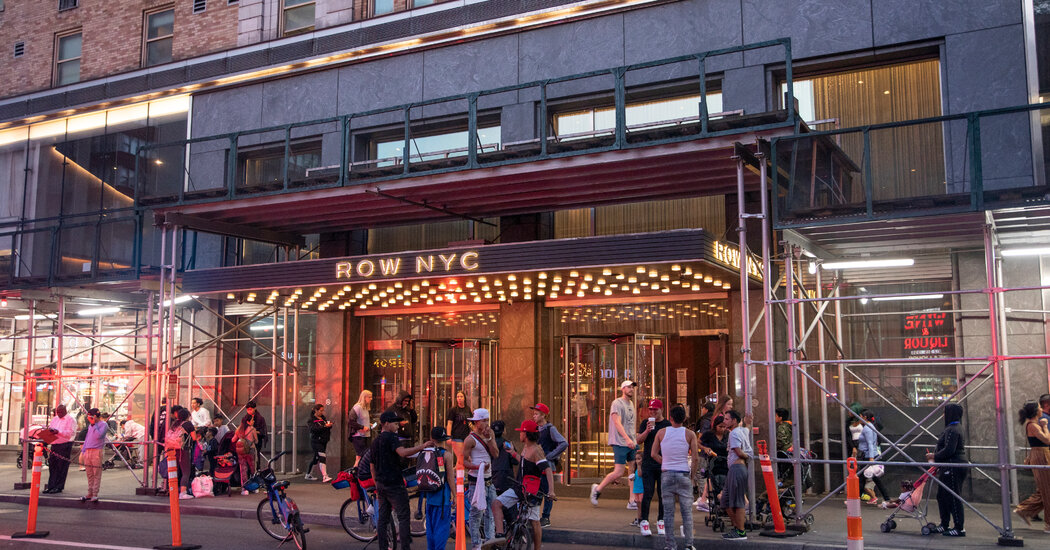In late 2022, as thousands of migrants began to arrive in New York City, city officials scrambled to find places to house them. They quickly found takers: hotels that were still struggling to recover from the pandemic-driven downturn in tourism.
Dozens of hotels, from once-grand facilities to more modest establishments, closed to tourists and began exclusively sheltering migrants, striking multimillion-dollar deals with the city. The humanitarian crisis became the hotel industry’s unexpected lifeline in New York; the hotels became a safe haven for tens of thousands of asylum seekers.
Two years in, as the city’s peak tourism season is about to begin, the migrant crisis has helped dramatically shift the hotel landscape in New York. The conversion of hotels to shelters has sharply decreased the supply of rooms just as tourist demand has risen, nearly to prepandemic levels, and is projected to match a record high.
The migrant shelters — along with other factors that include inflation, the loss of Airbnb short-term rentals and an expected decline in new hotel construction — have propelled the nightly cost of an average room to record levels.
The average daily rate for a hotel stay in New York City increased to $301.61 in 2023, up 8.5 percent from $277.92 in 2022, according to CoStar, a leading provider of commercial real estate data and analysis. During the first three months of 2024, when prices traditionally dip, the average stay was still 6.7 percent higher than during the same time period last year: $230.79 a night, up from $216.38 in 2023.
About 135 of the city’s roughly 680 hotels entered the shelter program, with many congregated in Midtown Manhattan, Long Island City in Queens and near Kennedy International Airport — all traditional magnets for tourists. Participating hotels are paid up to $185 a night per room, according to the city. Not a single one has converted back into a traditional hotel.
The Midtown hotels include the Row NYC Hotel, a four-star hotel in the middle of the theater district, and the century-old Roosevelt Hotel near Grand Central.
The use of city hotels for migrants represents a loss of 16,532 hotel rooms, leaving 121,677 hotel rooms for travelers, according to data compiled by CoStar, a leading provider of commercial real estate data and analysis.
That’s 2,812 fewer hotel rooms than existed in the period just before the pandemic — a shortage that is being acutely felt.
“During peak periods, try getting a hotel on a…
Click Here to Read the Full Original Article at NYT > Travel…
